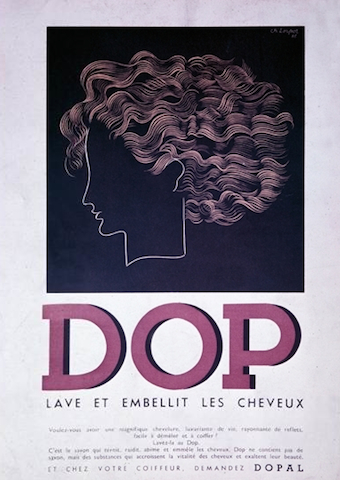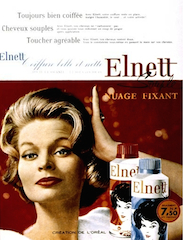We all know that L’Oréal is one of the largest cosmetic company in the world but do you actually know how many brands are part of this enormous beauty business group ? I knew the number would be high but I must admit I was actually quite surprised about how many companies are under the L’Oréal umbrella.
So here the long list !
L’ORÉAL LUXE
- Yves Saint Laurent Beauté
- Lancôme
- Giorgio Armani
- Biotherm
- Kiehl’s
- Shu Uemura
- Ralph Lauren
- Cacharel
- Helena Rubinstein
- Clarisonic
- Diesel
- Viktor&Rolf
- Yue Sai
- Maison Martin Margiela
- Urban Decay
- Guy Laroche
- Paloma Picasso
- CONSUMER PRODUCTS DIVISION
- L’Oréal Paris
- Garnier
- Maybelline New York
- Softsheen-Carson
- Essie
- ACTIVE PRODUCTS DIVISION
- Vichy
- La Roche-Posay
- SkinCeuticals
- Roger&Gallet
- Sanoflore
- The Body Shop
- PROFESSIONAL PRODUCTS DIVISION
- L’Oréal Professional
- Kérastase
- Redken
- Matrix
- Pureology
- Shu Uemura Art of Hair
- Mizani
- Essie
- CARITA
- Decléor
L’ORÉAL – A BIT OF HISTORY
In 1909, Eugène Schueller, a young entrepreneurial chemist founded the company that was to become the L’Oréal group. It all began with one of the first hair dyes that he formulated, manufactured and sold to Parisian hairdressers. With this, the founder of the group forged the first link in what is still the DNA of L’Oréal: research and innovation in the service of beauty.
By the end of the 1st World war a new age begins. Around the world, women are working, earning money, are growing more concerned about their appearance and seeking ways to prevent grey hairs from revealing their age. L’Oréal hair dyes are a great success, even beyond the borders of France, breaking new ground in Italy in 1910, Austria in 1911 and the Netherlands in 1913, even reaching as far afield as the United States, Canada, the UK and Brazil. This success is a the fist step toward the building of a hugely successful global business.
In 1928 Schueller takes over the company Savons Français to modernise and expand the business. He also creates a form of shampoo that doesn’t require rinsing with water. Next is the creation of his first bleaching solutions. It will be a huge success thanks to the world of cinema when Hollywood stars like Jean Harlow and her film “Platinum Blonde” launches a huge new trend with blond seen as the most seductive colour of the time.
By 1935 L’Oréal creates DOP which is quite simply the first “modern” shampoo for the masses. It was a major product innovation with a nothing to dissolve, nothing to heat formula, a ready-to-use shampoo which is gentle on the hair and also a symbol of a new approach to household hygiene in France.
In 1954 after three years of market research in the USA, the world’s largest cosmetics market, L’Oréal decides to cross the Atlantic. “Cosmetics for hair”, shortened to COSMAIR, becomes the exclusive representative for L’Oréal hair products in the United States, marking a major international milestone in company growth.
1957-1983 are the formative years of “Le Grand L’Oréal”. At the instigation of Chairman François Dalle, the Group starts to expand internationally. Acquisitions of strategic brands mark the beginning of a period of spectacular growth for the company.
L’Oréal Net for hairdressers in 1958 followed by Elnett (from elle (she) and nette (neat) – for consumers in 1962, are not only a complete departure from the established tradition of hairstyling products, previously dominated by brilliantine and gum lacquer, but are above all a new and revolutionary way to fix hairstyles. It’s goodbye to stiff hair and hello to hair that’s silky soft to the touch! In 1962, Elnett Satin adopts its slimline golden silhouette and becomes the “golden goddess”. In 1968 sees another innovation: the micro-spray delivering an even finer mist distributed evenly all over the hair, which simply brushes out with minimum effort. Thanks to this groundbreaking formula, L’Oréal becomes the global hairspray market leader. The story of a mythical product inextricably linked with L’Oréal’s own history.
1963 – In recognition of its spectacular and sound development, the L’Oréal Group is listed on the Paris Stock Exchange which gives it access to new financial resources.
Founded in 1935 Lancôme is a great perfume, skincare and make-up brand that at this time is already the embodiment of elegance and French style in many countries. Its major products such as Nutrix cream created in 1936 win over L’Oréal, which is keen to position itself in the upmarket cosmetics sector and the perfumery channel. The acquisition of Lancôme in 1964 is the first stepping stone on the road to becoming a luxury goods empire.
In 1965 L’Oréal acquires Laboratoires Garnier who have been successfully marketing various hair products since the 1920’s: Garnier plant-based lotion, Moelle Garnier energy-boost shampoos with natural extracts which enables L’Oréal to acquire a portfolio of complementary haircare products with a different approach to haircare.
1984-2000 L’Oréal’s mission is to become number one in the beauty industry.
In 1985 L’Oréal embraces the style of the 80’s and creates a complete line of hairstyling products, Studio Line: gels, mousses, sprays. Based on innovative formulas, these products give everyone, regardless of age or hair type, the freedom to create their own style and the result is tremendous worldwide success.
In 1988 Lindsay Owen-Jones becomes the new CEO. Under his highly unconventional leadership the Group undergoes a radical transformation. Lindsay Owen-Jones takes what is essentially a French export company and turns it into an international group, operating in over 130 countries and present in all distribution networks. From a company producing primarily haircare products, he creates a more balanced range of activities, centred around 5 core businesses: hair colour, haircare, skincare, make-up, and perfume. From a portfolio of national brands, he would create a portfolio of 23 international megabrands, designed to meet the needs of both women and men throughout the world.
In 1989 L’Oréal acquires Helena Rubinstein, the American brand of skincare products. This luxurious, innovative brand, created in the image of its famous founder, is already well positioned on the European, Japanese and South American markets.
Following Helena Rubenstein, L’Oréal signs a licensing contract with Giorgio Armani, allowing the company to promote this prominent name in fashion, in the area of beauty products and fragrance. These latest acquisitions enable L’Oréal to expand its international portfolio of luxury brands, together with the French brand, Lancôme and the US brand, Ralph Lauren.
L’Oréal consolidates its dermatological expertise and its presence in pharmacy networks with the acquisition of La Roche-Posay, a high-tech dermatological product recommended by dermatologists all over the world.
1993 Acquisition of Redken a premium New York inspired hairstyling company.
In 1996 the acquisition of Maybelline the leader in mass-market make-up in the United States, represents a strategically important step. Not only does it establishes L’Oréal as the uncontested leader in the United States—the most crucial market in the world—but it also confirms the company as the world leader in mass-market make-up. Moreover Maybelline opens doors for L’Oréal in Asia—especially in China, where the company already operates one factory.
2000 L’Oréal acquires Carson, leader in afro-specifics haircare, followed by Kiehl’s ( a niche cosmetic brand ), then Matrix ( No.1 US professional haircare ).
2003 The alliance with Mr. Shu Uemura, a great make-up artist and beauty guru, enables L’Oréal’s Luxury Division to enter the strategic Japanese market, traditionally served by only local brands. It also gives global outreach to an international luxury brand anchored in Japanese ideas and aesthetics.
2004 L’Oréal acquires Yue Sai, an affordable luxury skincare and make-up brand that epitomises the modern Chinese woman, and perfectly complements the Group’s international portfolio.
2005 L’Oréal acquires Skinceuticals, a premium American beauty care brand for professionals, used and sold by dermatologists, plastic surgeons & quality spas.
2006 sees the acquisition of SkinEthics, The Body Shop and Sanoflore.
2008 YSL Beauté and its crown jewel YSL join L’Oréal’s Luxury Products Division. With this strategic acquisition, L’Oréal opens a whole new chapter in its history with the ambition of becoming world leader in selective distribution. YSL Beauté has six brands of fragrance, make-up, and skincare: Yves Saint Laurent, Roger&Gallet, Boucheron, Stella McCartney, Oscar de la Renta and Ermenegildo Zegna.
2010 -2011 Acquisition of Essie and Clarisonic.
2012 Acquisition of the Urban Decay US makeup brand.
2013 Acquisition of Decléor and Carita.
So now you know a bit more on how L’Oréal became the enormous global beauty giant that we all know !
AM x




